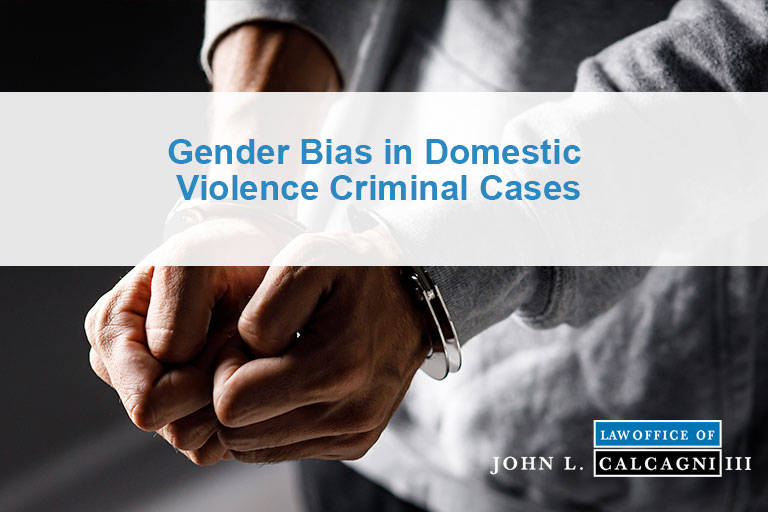Gender Bias in Domestic Violence Criminal Cases

Domestic violence is a hot topic in modern society, and as such, the criminal justice system has adopted various procedures and resources for processing domestic violence criminal cases. Police officers who investigate these crimes are required to complete special documentation and are often called upon to make arrests when responding to domestic violence calls.
Laws to protect victims of domestic violence mandate the immediate imposition of no-contact orders between complainants and defendants. Courts also employ special domestic violence advocates to help complainants or victims of domestic violence navigate the criminal justice system.
Contents
The Gender Bias Phenomenon: A Closer Look at the Statistics
Historically and statistically, the vast majority of domestic violence criminal cases involve male offenders and female victims. As such, this has created a gender bias against men during domestic violence investigations and prosecutions for which participants in the criminal justice system must beware.
Case Studies: Evidence of Bias in Action
I recently had the occasion to defend two men, each accused of similar domestic violence crimes. In both cases, the men called police to complain of domestic violence. In the first case, a man and woman were involved in a romantic relationship.
The woman returned home in the man’s automobile from a work event. She was visibly intoxicated and refused to exit the car. This resulted in a verbal dispute, all of which the man captured on video, where she behaved in a violent and disorderly manner.
The woman’s teenage son was also present for the incident. When the woman refused to exit the car and relinquish the keys, the man called police. Upon their arrival, police found the man on the sidewalk waiting for them, and the woman inside her home.
Police interviewed the parties separately, and based on the woman’s uncorroborated claim that the man assaulted her, he was arrested and charged with domestic violence offenses. Despite his protestations and the fact that he called police, he was labeled as the aggressor.
In the second case, a college man was involved in a romantic relationship with a transgender female. The two had a verbal dispute prompting the man to ask the transgender woman to leave his apartment. She refused and he called the police. When police arrived, they interviewed both parties separately. After doing so, the man was arrested and charged with domestic violence crimes based on the transgender woman’s uncorroborated claims.
Fortunately, both men were vindicated. The first man was found not guilty after trial. The prosecution dismissed the second man’s case after the transgender woman’s testimony. The lesson learned from these recent cases is that police do not always get it right in their arrest decisions. This appears to be especially true in domestic violence cases.
Addressing Gender Bias: Proposals for a Fairer Justice System
This article makes no attempt to minimize the importance or severity of domestic violence and resulting cases in the criminal justice system.
However, authorities must be reminded that notwithstanding history and statistics, men can also be victims of domestic violence by women.
As such, when men call the police to report domestic violence, their complaints should be taken equally as serious as similar complaints made against men by women. This is particularly important in Rhode Island, where a victim’s complaint is all the evidence needed to establish probable cause to arrest and criminally charge someone with a domestic violence crime.
Based on recent experiences, it appears that when faced with classic “he said, she said” claims of domestic violence, police more often side with women than men, thereby underscoring the presence of gender bias in these cases.
One solution would be to document the claims of both parties, and if each claim establishes probable cause for a domestic violence crime, arrest, and charge both the man and the woman.
After all, police are tasked with the responsibility of documenting complaints and investigating crimes, thereby leaving credibility determinations to the courts. Arresting both parties, if each person claims to have been the victim of domestic violence, will eliminate gender bias and give each party equal access to justice.
Another possible solution is to develop a warning system, whereby a warning to alleged domestic violence offender may be issued and documented before police resort to an arrest and resulting criminal prosecution.
This proposed solution would cut down on the many frivolous domestic violence cases that inundate the criminal justice, only to result in dismissals for lack of prosecution. It would also address the gender bias issue by documenting men’s claims against women without resulting in one party being arrested and charges (which is most often, the men).
Conclusion: A Call for Awareness and Change
Gender bias in the criminal justice is alive and well and is not going to disappear anytime soon. The purpose of this article is to create awareness of this bias, so that participants in the criminal justice will more carefully weigh and evaluate domestic violence claims by men against women.
After all, all persons are equal in the eyes of the law, and men should be treated accordingly, especially in connection with domestic violence investigations and prosecutions.
If you have been accused of a domestic violence offense, contact Rhode Island Domestic Violence Criminal Defense Lawyer, John L. Calcagni III, for a free consultation at (401) 351-5100.
